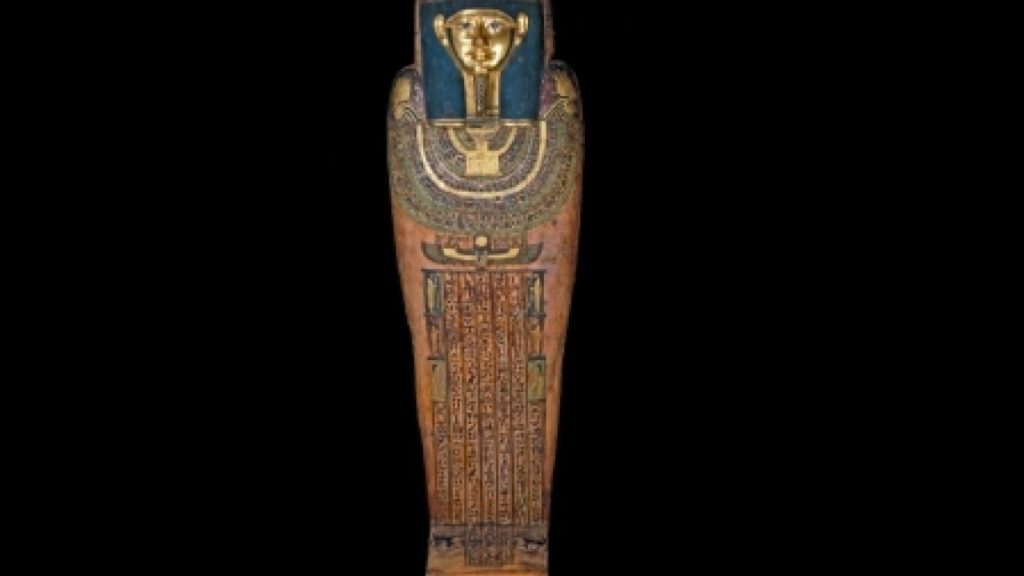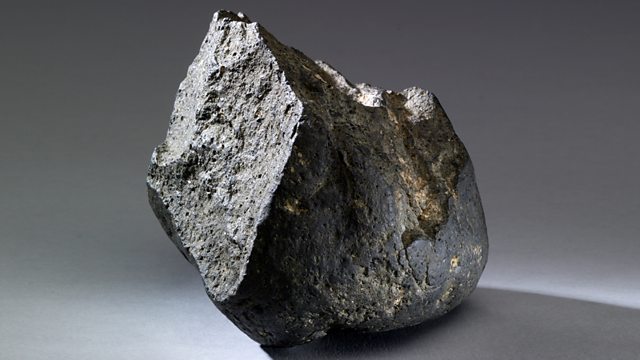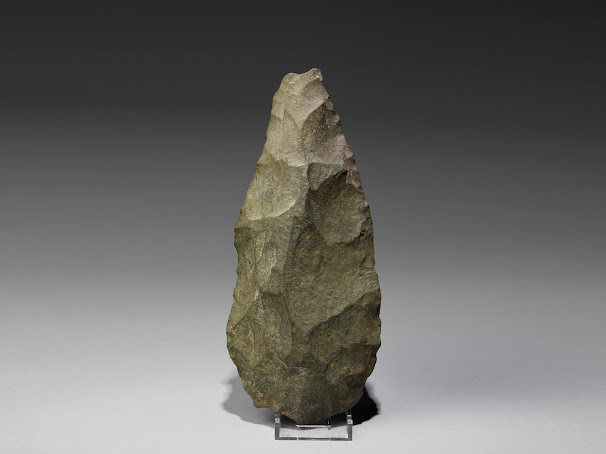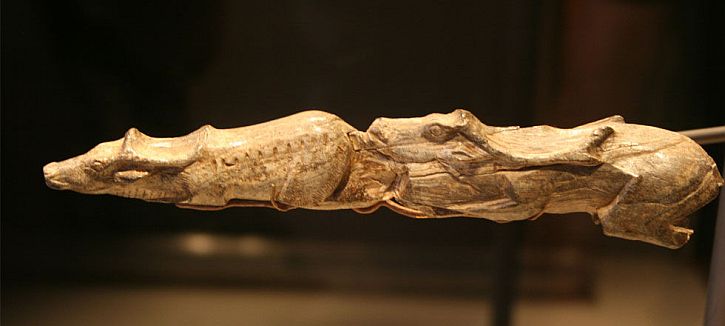Citations:
Macgregor, Neil. A History of the World in 100 Objects. Viking, 2011. Buy here!
As an Amazon Associate, I earn from qualifying purchases.
The first 5 historical objects from the book A History of the World in 100 Objects by Neil MacGregor.
Part 1: Making us Human. From 2,000,000 – 9000 BCE.
Macgregor says:
“Human life began in Africa. Here our ancestors created the first stone tools to chop meat, bones and wood. It was this increasing dependency on the things we create that makes humans different from all other animals. Our ability to make objects allowed humans to adapt to a multitude of environments and spread across Africa into the Middle East, Europe, and Asia. From about 40,000 years ago, during the last ice age, humans created the world’s first representational art. This ice age caused the world’s sea levels to fall, exposing a land bridge between Siberia and Alaska that allowed humans to reach the Americas for the first time and spread rapidly across the continent.” (1)
Object 1: The Mummy of the Egyptian priest Hornedjitef from circa 240 BCE.

This wooden case is a wealth of information about Egyptian civilization. The object is a black outer coffin, with a decorated inner case, and of course Hornedjitef himself, mummified and wrapped in amulets. There is no other record of the priest which has survived to the current day.
The name of the priest can be found on the inner coffin. He was a priest in the Temple of Amum at Karnak during the reign of Ptolemy III.
This is the extent of our biographical knowledge of Hornedjitef. We also know a great deal about Hornedjitef’s beliefs.
Like all Egyptians, Hornedjitef believed that if his body and belongings were preserved upon death, that he would continue to exist in the afterlife. But the path to the underworld is fraught with danger & darkness. To prepare him for this treacherous journey, his coffin has illustrations of the sun god as a winged scarab beetle, a symbol of spontaneous life with a legion of baboons worshiping the rising sun. the underside of the lid is decorated with spells, images of protector gods, and even constellations of stars to help guide the way. In a way, the coffin is a miniature cosmos. MacGregor says, “Hornedjitef has commissioned his own personal star map and time machine.” (4)
There is a limit to what can be passed down through words and symbols alone. Objects, however, can reveal a great deal more.
Modern CT scanning allows us to see inside the mummy himself without damaging him. Scientists can discern that the priest was middle aged to elderly when he died, the types of foods he ate, and that he had very bad arthritis in his back.
There is still more to be revealed, specifically how grand Egyptian civilization was. Testing the material that goes into mummification can reveal a wealth of information. Some mummy cases have a black, tarry bitumen on their surface a substance which is traced back to the dead sea many hundreds of miles North of Egypt. Other coffins are made of expensive ceder wood, a costly item imported by the Egyptians from Lebanon. MacGregor says, “Putting individuals like Hornedjitef in these wider contexts, seeing them not just as single survivors from a distant past but as parts of a complete society, is helping us to write fuller histories of ancient Egypt than those which have been possible in the past.” (8)
Object 2: Olduvai Stone Chopping Tool circa 1.8-2 million years old.

To the layman, this stone looks like any other rock one might come across in a valley or mountain ridge. However, archaeologists believe this stone is the oldest known humanly made thing ever discovered. Found at the Olduvai Gorge in modern day Tanzania, geological testing shows the tool is nearly 2 million years old. It was found next to a pile of bones, suggesting it was used as a butchering tool.
The humans that lived 2 million years ago would have been hardly recognizable to humans today. Yet, this tool marks a decisive change from our other ape relatives. Other apes use tools, but only humans are known to make tools in preparation or prior to needing them. Once we have used them, we keep them around to keep using them again. Advanced tool usage is an inherent part of human civilization. This is because, as Macgregor says, “people have been unable to survive without the things they make; in this sense, it is making things that makes us human.” (13) Not only is the Olduvai Gorge in Africa the cradle of humanity; it is also the cradle of human civilization. Everything that makes us human descended from these origins in Eastern Africa.
The naturalist David Attenborough describes in detail the feel of the Olduvai Stone Chopping Tool:
“Holding this, I can what it was like to be out on the African savanahs, needing to to cut flesh, for example, to cut into a carcass, in order to get meal. Picking it up, your first reaction is it’s very heavy, and if its heavy of course it gives power behind your blow. The second is that it fits without any compromise into the palm of the hand, and in a position where there is a sharp edge running from my forefinger to my wrist. So I have in my hand now a sharp knife. And what is more, it’s got a bulge on it so I can get a firm grip on the edge, which has been chipped specially and is sharp… I could perfectly effectively cut meat with this. That’s the sensation I have that links me with the man who actually laboriously chipped it once, twice, three times, four times, five times on one side and three times on the other… so eight specific actions by him, knocking it with another stone to take off a flake, and to leave this almost straight line, which is a sharp edge.” (11)
This tool was used for chopping meat off of bones, to break open bones to get the rich bone marrow inside, to strip bark and peel roots as well.
The consumption of bone marrow fat is significant as bone marrow is extremely nutritious, providing enormous reserves of energy not just for physical strength, but more importantly, the brain. The human brain is a measly 2% of our body weight, yet consumes 20% of all bodily nourishment.
MacGregor says, “Using tools like this to obtain bone marrow, the most nutritious part of a carcass, they set in train an ancient virtuous circle. This food for body and mind meant that the more cunning larger-brained individuals would survive to breed larger-brained children, capable in their turn of making ever more complex tools. You and I are just the latest product of this continuing process.” (12)
With the exception of Tarsiers, most primates are largely herbivorous, though they do supplement their diet with insects, small animals, and in some cases, other ape meat. Today, ape brains remain significantly smaller than humans and are also symmetrical. In contrast, Humans developed asymmetric brains, the right brain/left brain distinction, which facilitated logic, language, tool-making, imagination, and creative thought.
Object 3: Olduvai Handaxe circa 1.2-1.4 million years old.

Around a million years separate the Olduvai Stone Tool and the Olduvai Handaxe. The advancement in design cannot be overstated. The Stone tool could be made simply by using another rock to chip away portions of it. On the other hand, the handaxe is only created with experience, careful planning, skill refined over a long period of time, and incredible manual dexterity. Not just this, but there is also a conceptual leap that has occurred in the million years between the Stone Tool and the Handaxe. Macgregor says, “to be able to imagine in the rough lump of stone the shape that you want to make, in a way a sculptor today can see the statue waiting inside the block of stone.” (17)
There is even a hypothesis that there is a correlation between the construction of the handaxe and language. Neuroscientists have noticed the many of the same neurons activated by the creation of a stone tool are also activated when you speak. MacGregor says, “It now seems very likely that if you can shape a stone you can shape a sentence.” (17) The sheer amount of knowledge necessary to create the handaxe pressuposes a level of linguistic acumen necessary to pass on such knowledge to future generations.
The Handaxe was the swiss army knife of the Stone Age. The pointed end could be used as a drill, and the sharp sides could be used on everything from chopping wood, to flaying meat, to scraping bark.
The utility of the handaxe became the ticket for human exploration outside of our origins in Eastern Africa. All of the techniques needed to make and use the handaxe are portable. Such handaxes can be found nearly everywhere across the globe. Humans were creating objects that they used to negotiate the world.
Object 4: Swimming Reindeer circa 11,000 BCE

Why do all modern humans share the compulsion to make art? Why does man the tool-maker everywhere turn into man the artist? Artwork does not seem to have any practical application when it comes to survival. It is the form itself which was the goal of its creation.
This tiny sculpture of two reindeer is only about 20 centimeters (8 inches long). It was carved from the tusk of a mammoth. The sculptor was likely a hunter with detailed knowledge of reindeer and how they moved. Both animals are shown as they would look swimming through a river.
While such an artifact may seem trivial to us, reindeer were essential to the survival of this artist. 13,000 years ago in Europe, it was significantly colder and had a landscape similar to present-day Siberia. Reindeer provided meat, skin, bones, and antlers, all the necessities of hunter-gatherer life. Macgregor says, “As long as they could hunt reindeer they would survive & survive comfortably.” (pg 22)
From this reindeer we can see the different stone tools available to the artist, tools which he must have had some mastery of. The material of the figure, a mammoth’s tusk, was cut off with a chopping tool. The contours of the reindeer were whittled with a stone knife and scraper. The entire sculpture was polished using a powdered iron oxide mixed with water. Finally, only a stone engraving tool could have allowed the artist to incise the detailed eyes, antlers, and other animal features. It is quite a complex work.
Professor of Archaeology Steven Mithen says:
“Something happened in the human brain, between say 50,000 and 100,000 years ago, that allowed this fantastic creativity, imagination, artistic ability, to emerge—it was probably that different parts of the brain became connected in a new way, and so could combine different ways of thinking, including what people know about nature and what they know about making things. This gave them a new capacity to produce pieces of art.”
But why go through the trouble of making an object whose only value lies in its form?
Dr. Mithen says:
”Ice age conditions were critical as well: it was a very challenging time for people living in harsh, long winters—the need to build up really intense social bonds, the need for ritual, the need for religion, all these related to this flowering of creative art at the time. Part of the art is an overwhelming sense of delight & appreciation and celebration of the natural world.” 24
The Archbishop of Canterbury, Dr. Rowan Williams says:
“You can feel that somebody’s making this who was projecting themselves with huge imaginative generosity into the world around, and saw and felt in their bones that rhythm. In the art of this period you see human beings trying to enter fully into the flow of life, so that they become part of the whole process of animal life that’s going on around them, in a way which isn’t just about managing the animal world, or guaranteeing them success in hunting.”
Object 5: Clovis Spear Point 11,000 BCE

We can learn a lot from objects thrown away. Immigrants traveling the perilous journey through the deserts of Mexico and Southwest United States, leave behind lots of garbage that tells us a great deal about their lives.
The Clovis Spear Point tells a story about a different migration: the migration from the heart of Africa to every corner of the globe. This is the business end of a deadly weapon and was lost by a human in modern-day Arizona 13,000 years ago. These types of tools have been found in almost every corner of the Americas. The ripples on its side produce intense bleeding in any animal they hit. Even if you don’t hit it fatally, one only has to wait for the blood loss to weaken the animal till you can easily kill it. The Clovis Spear Points shows us definitively that humans had reached the farthest reaches of the Americas around 15,000 years ago crossing the frozen land bridge in the Bering Sea from Asia.
According to Professor Gary Haynes, “If you dig an archeological site almost anywhere in North America, the bottom levels are about 13,000 years old, and if there are any artefacts, they will be Clovis or Clovis-related.” (28)
That’s the first five objects of the book The History of The World in 100 object. Next time, we’ll look at the history of food & sex.
